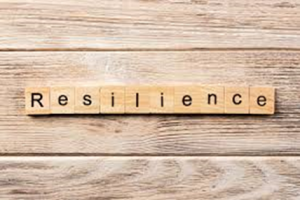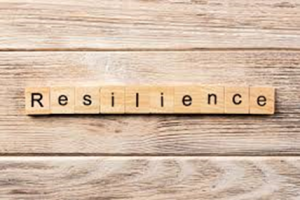Supply chain resilience: hype or lifestyle?

The word ‘resilience’ suddenly seems to be cropping up everywhere – and not only in relation to supply chain. It’s as if resilience is being presented as the key to surviving the current crisis in almost every context. So am I going to argue against resilience in this article? No, definitely not. I fully agree that supply chain resilience (because that’s what I’m focusing on here) is crucial. It always has been, but it just wasn’t top of mind until now. As Covey says, just like supply chain risk management, it’s a prime example of something that’s important but not urgent – until it suddenly does become urgent (crisis!) and we realize that we’re too late. That’s why I’m very happy that supply chain resilience is finally getting the attention it deserves. In this article, I aim to explain why it should receive continuous attention rather than being a passing hype. All too often, I see companies riding the waves of a hype and making the wrong decisions. We’ve all seen examples of over-ambitious or failed ERP implementations, overly dogmatic adherence to lean principles, and so on... lots of high expectations, but ultimately disappointing results. So while there’s no doubt that you should be acting to improve your supply chain resilience, the goal of this article is to remind you to think before you act!
Overweight and a heart attack
Being overweight and suffering a heart attack is an appropriate analogy for the situation in which many companies currently find themselves. Their GP had warned them often enough. The excess weight gained as a result of too little exercise, too much (unhealthy) food, too much smoking and too much alcohol had increased their risk factor. But changing bad habits is difficult and requires strong willpower, so any attempts often end in failure. The realization that things really need to change only usually dawns when it’s too late and you’re hooked up to a monitor in the hospital. Many companies are now ‘hooked up to a monitor’ or on the verge of being taken into intensive care. There are significant differences between sectors, of course, but the same question applies everywhere: how resilient is your supply chain? If, for the sake of convenience, we define ‘resilient’ as ‘the ability to quickly revert back to the original state after a disruption’ then we can continue with this analogy. Imagine that you’ve taken all your GP’s recommendations to heart and you’re leading a healthy lifestyle. There’s still no guarantee that you won’t suffer a heart attack – you might have bad genes or simply bad luck. However, a healthy lifestyle will reduce your risk of a heart attack. Plus, in the unlikely event that a heart attack does occur, it will help you to recover more quickly and strongly afterwards. In other words, it will give you the resilience to rapidly revert to being your old self.
Is supply chain resilience a new concept?
 No, the idea of supply chain resilience has been around for a long time, with the first publications on the topic dating back to before the global financial crisis. One of the most widely used supply chain resilience models comes from a publication by Professor Martin Christopher from Cranfield in 2004, and Yossi Sheffi from MIT has been writing about resilience for years (The Resilient Enterprise dates from 2005 and The Power of Resilience from 2015). Were they lone voices in the wilderness? Yes, to a certain extent, but they were – and are – right. The topic simply didn’t get the attention that it deserved. In August of this year I ran a training session on supply chain resilience for a big German multinational. As it happened, in that same week, the management board had just announced resilience as a topic for 2021. The participants on the training course were extremely surprised when I referred to models that have been around since 2004. That says it all…
No, the idea of supply chain resilience has been around for a long time, with the first publications on the topic dating back to before the global financial crisis. One of the most widely used supply chain resilience models comes from a publication by Professor Martin Christopher from Cranfield in 2004, and Yossi Sheffi from MIT has been writing about resilience for years (The Resilient Enterprise dates from 2005 and The Power of Resilience from 2015). Were they lone voices in the wilderness? Yes, to a certain extent, but they were – and are – right. The topic simply didn’t get the attention that it deserved. In August of this year I ran a training session on supply chain resilience for a big German multinational. As it happened, in that same week, the management board had just announced resilience as a topic for 2021. The participants on the training course were extremely surprised when I referred to models that have been around since 2004. That says it all…
Classic risk management
So how does supply chain resilience differ from the classic approach to risk management? Risk management starts with identifying the potential risks and then assessing them based on likelihood and impact. This is followed by setting priorities, deciding on possible mitigating actions and a follow-up plan. This approach works fine and is closely aligned with issues such as safety, for example. It is a very analytical and technocratic approach. But things start to go wrong when we’re confronted with so-called ‘unknown unknowns’ (Black Swans such as the financial crisis, COVID-19, cyberattacks, etc.). These events can’t be assessed using the classic likelihood/impact method. The only way to deal with them is to be resilient. In my view, that’s why supply chain resilience the best way to take a continuous and structured approach to risk management.
Supply chains: complex and dynamic
There are several reasons why certain supply chains are particularly susceptible to disruptions. The complexity and dynamism of a chain increases its vulnerability to disruption, which makes it more important to focus on resilience. The complexity of different supply chains varies greatly depending on the product, market, competition and so on. A car is completely different from a paper clip. A multinational with a hundred factories, thousands of suppliers and millions of customers is completely different from a local trader selling a commodity product. Complexity often tends to increase, but adding complexity can sometimes be a conscious strategic decision. Supply chains are also very dynamic. Internal and external factors (e.g. internationalization, shorter product life cycles, promotional pressure, etc.) create a lot of dynamism in the supply chain, resulting in change being the only constant. It’s no coincidence that the acronym VUCA (Volatile, Uncertain, Complex, Ambiguous) has increasingly been used to describe the world in recent years, not to mention the current ‘VUCA turbo’ situation… Increasing dynamism also makes it more difficult to regain control following disruptions. Gaining insight into and awareness of complexity and dynamics in your supply chain is the first step on the road to resilience.
Efficiency anorexia
In fact, companies themselves are sometimes guilty of making their own supply chains more susceptible to disruptions. A strategy aimed at maximizing efficiency puts a company at particular risk and can lead to ‘efficiency anorexia’. Focusing purely on efficiency – and then deciding to source all your raw materials from a single, low-cost Chinese supplier, for example – can make you vulnerable. Many businesses are now in trouble because they put all their eggs in one basket; they implemented efficiency at the expense of flexibility. The solution is to make the right trade-offs within your efficiency strategy in order to maintain a certain level of flexibility. But is that possible? Yes, it most definitely is. It just requires you to provide visibility into the trade-offs and to make deliberate choices.
How can you maintain your target weight?
To return to the analogy again, supply chain resilience can be compared to making lifestyle changes. If you want to lose weight, there are various options. It sometimes starts with a new year’s resolution: to go to the gym regularly from 1 January onwards or to start a new diet. You usually see clear results in the first few weeks, and perhaps you’ve even lost considerable weights after a while. But the hard part comes later. How can you avoid the dreaded yo-yo effect? How can you prevent having to go back on a diet six months or a year down the line? The only way to achieve a lasting effect is to change your lifestyle (or in other words your behaviour) by making improvements in several areas (e.g. exercise, smoking, food, drink) and monitoring whether you’re still on track – and by taking decisive action if you aren’t.
How can you implement supply chain resilience? #how
Just as when striving to maintain a healthy weight, supply chain resilience isn’t something that should be done as a kind of ‘quick-fix diet’. Your approach needs to ensure that it’s a lasting solution: supply chain resilience as a lifestyle choice. Implementing supply chain resilience is the optimal way to cope with risks and disruptions. But the question is, how? Needless to say, it’s not easy. There’s no simple checklist, action plan or software tool. You need to tackle it more broadly than classic risk management. Besides the process-related and technical aspects, there is also a clear human side. For example, if your company culture means that everyone waits for instructions before taking action, then you’ve still got a long road ahead of you. So a broad, holistic approach is required, but if you don’t also make it relevant the initiative will be dead in the water and never achieve any results. We believe that this is closely aligned with supply chain best practices that we are aware of or have implemented. Besides that, there’s no one-size-fits-all solution. Each customer will require a different approach in line with their own context and culture. Creating a resilient supply chain is more of an evolution than a revolution. To get a clear overview: Check our Mindmap Supply Chain Resilience
Supply Chain Resilience Health Check
As outlined above, we regard supply chain resilience as a necessary lifestyle for companies (rather than it being a hype or buzzword of the year). To support this and help companies stay on track, we’ve developed a Supply Chain Resilience Health Check. Based on a points system for various aspects, companies can see which level they are at and the results can be used to decide which changes are necessary. This is not a one-off exercise or a matter of the management just ticking boxes. For it to be a lasting success, it will indeed have to become a lifestyle. That means regularly performing a health check, interpreting the results and analysing what has worked well and what hasn’t – and then translating those findings into actions. The Supply Chain Resilience Health Check is designed to be as relevant as possible and can be adapted in line with the customer’s specific circumstances. And here too, in terms of implementation, we believe in making it as easy and accessible to use in practice as possible. For example, it could easily be integrated into the existing S&OP/IBP cycles. At Involvation, we are ideally positioned to fulfil the role of ‘personal trainer’ by performing the health check, analysing the results, and helping you to reflect on the findings and take the necessary action – for lasting health in the future...
Related items





